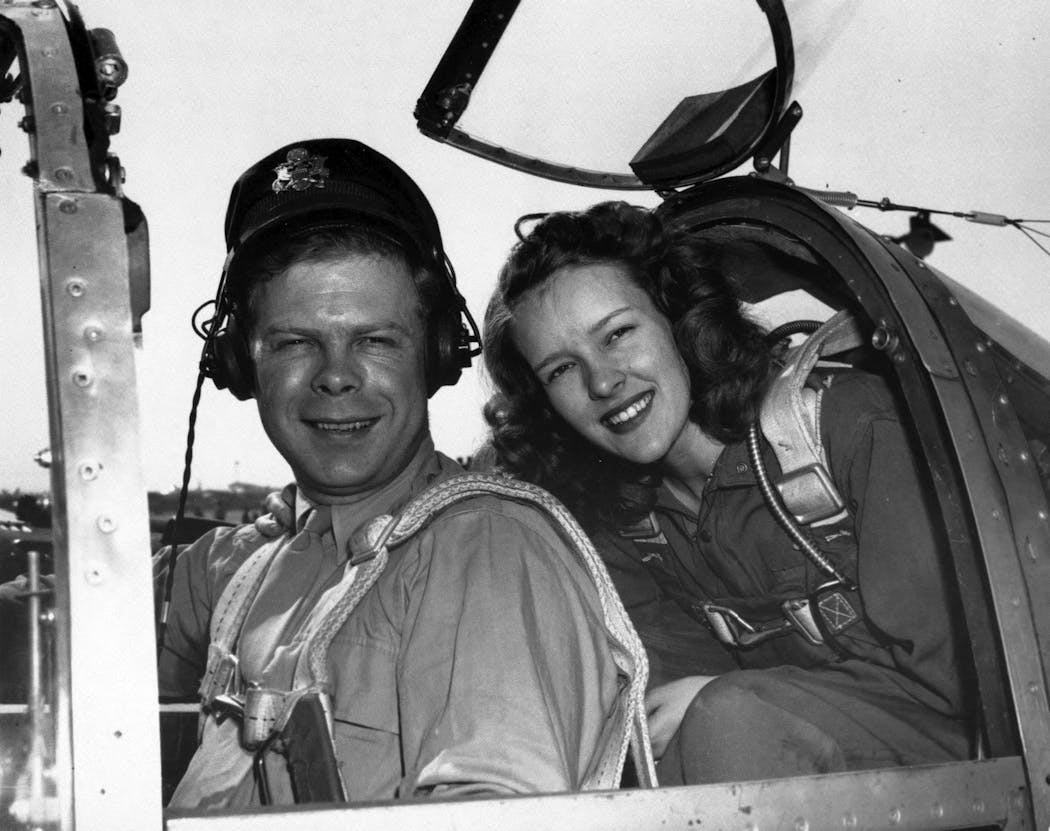DULUTH - Richard I. Bong's Lockheed P-38 Lightning, a plane perhaps as famous as the World War II ace from northwestern Wisconsin who piloted it, crashed in a jungle near the north coast of what is now Papua New Guinea in March 1944, leaving behind wreckage that has gone largely unexamined.
Not for long.
Eighty years later, a crew from a nonprofit organization that in part sifts through the debris of war, is planning an expedition back to the island. Pacific Wrecks, hired by the keepers of the Richard I. Bong Veterans Historical Center in Superior, Wis., is on the hunt for the exact spot of the crash and defining pieces or serial numbers that positively identify the plane.
Bong, who grew up in Poplar, Wis., and learned to fly at what is now the University of Wisconsin-Superior, wasn't manning the P-38 when it crashed. But in the time he did, he had made the plane his own. A larger-than-life college graduation portrait of his sweetheart Marjorie Vattendahl decorated an exterior spot near its nose. He had nicknamed the plane for her, too.
"Marge," Bong was quoted as saying, "was the most shot-at girl in the Pacific."
The signature piece at the Richard I. Bong Veterans Historical Center is a replica with markings that match the highly decorated pilot's plane. Though named for Bong, the museum is meant as a tribute to local veterans. The collection includes oral histories, military uniforms, weapons, manuscripts, diaries, newspapers and more.
Museum curator Briana Fiandt developed an interest in the exact location of the plane and sought out Pacific Wrecks for help. She found out that finding this wreck was on founder Justin Taylan's bucket list. She knows they can't squirrel away a keepsake, but finding it — and chronicling it — would mean a lot to the museum and its aficionados.
"To actually go find the plane that [Bong] touched and flew, it would be like bringing a little piece of history from New Guinea back to the United States," she said.
Bong became a flying cadet in the U.S. Army Air Corps and went on to be considered the ace of ace pilots. He flew in 200 missions, shot down an unmatched 40 enemy planes during World War II and earned numerous awards, including a Medal of Honor. His name is affixed to one of two major bridges between Duluth and Superior — the Richard I. Bong Memorial Bridge.
Bong was in Australia when "Marge," flown by Thomas Malone, had engine failure in 1944. The pilot was able to get out of the plane before it crashed into the jungle.
Bong wasn't as lucky. He died just more than a year later after the plane he was test-flying went down in Burbank, Calif. — the same day the United States dropped the atomic bomb on Hiroshima. Bong was 24 and had been married just six months to Vattendahl. (Their wedding was described by the New York Times as the biggest "this northern Wisconsin town has ever seen"; their honeymoon destination was a "military secret.")
Marjorie Bong Drucker was described as a retired magazine editor and widow of "ace of aces" Maj. Richard I. Bong in an obituary that ran in the Los Angeles Times. She was 79 in 2003 when she died of cancer in Superior. She found fame, with her photo on the side of a famous war pilot's plane.
She spent most of her life in California, where she married two more times and had two children. In the mid-1980s, she became invested in celebrating Bong in his home region. She attended the dedication of the Bong Bridge and was behind efforts to build the Bong museum. She is buried alongside him on family land in Poplar, Wis.
John Gidley, executive director of the museum that is helping to fund the expedition, said he hopes the discovery of the plane brings more recognition to "a great war hero."
"He's the most significant person they didn't make a movie out of," he said.

'We've waited long enough': Minneapolis education support workers authorize strike
Officials ID 14-year-old shot and killed while in SUV at northeast Mpls. gas station
Minnesota Republican congressional candidates seek endorsements at Saturday conventions

'No Mow May' eases to 'Less Mow May' in some Twin Cities suburbs



